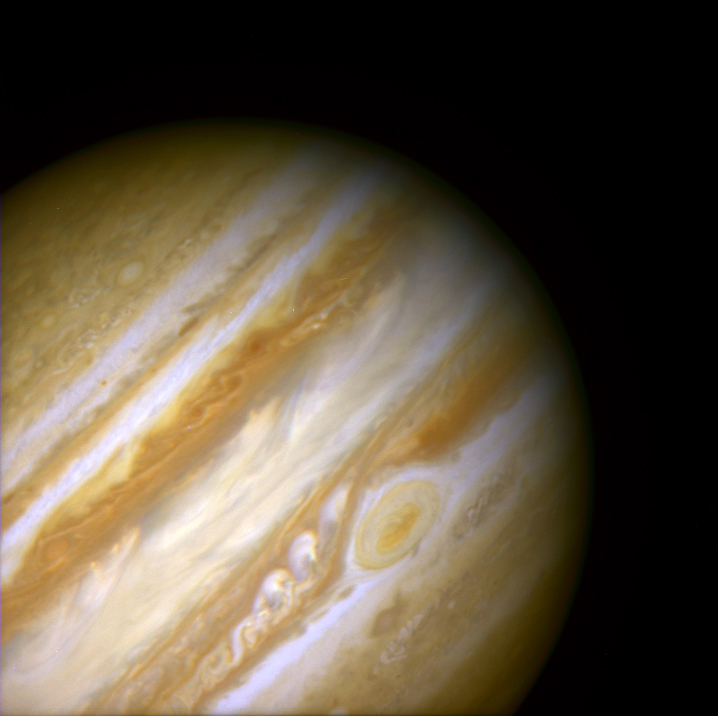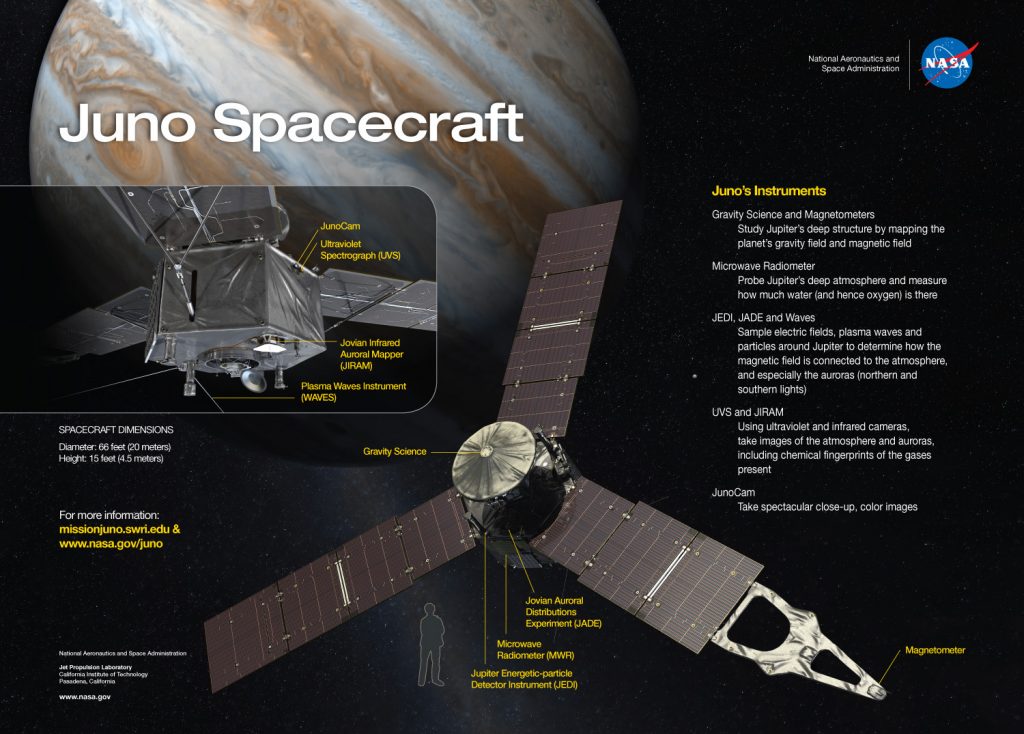Why Juno Holds the Key To Jupiter’s Biggest Secrets

image credit: missionjuno.swri.edu
Our fascination for the universe have always inspired us to go on space missions. We build telescopes in the hopes of finding extraterrestrial life. We build satellites to communicate in deep space. But some of us find it most exciting to send space probes to study other planets. One particular spacecraft that has made another landmark achievement in space exploration is Juno.
It is named after the Roman goddess who is the wife of Jupiter, the Greek counterpart of Hera. It is but fitting that a probe would be made under her name, the wife who will help us understand her husband more. Following the footsteps of the Galileo space probe, Juno will find out more about the giant red planet. It was launched on August 5, 2011 and finally arrived in Jupiter on July 4, 2016, just a second late from its original schedule.

image credit: missionjuno.swri.edu
Jupiter is a Jovian Planet
If there is one planet that still greatly mystifies us, it is Jupiter. It is presumed to be the first planet that formed in our solar system as it has the same gases of what the sun is made of which are primarily hydrogen and helium.
The big red planet lies beyond the so-called “frost line” where water and other elements start to freeze. Aside from Jupiter, three other planets lie within this region: Saturn, Uranus, and Neptune. All four planets are called Jovian planets, as they resemble the planet Jupiter— huge planets mostly composed of hydrogen and helium. All four planets have distinct ring systems though Saturn’s rings are the most prominent among the four. Jupiter and Saturn are mostly made of gas while Uranus and Neptune are mostly made of ice.
Elements present in Jupiter include: hydrogen, phosphorus, sulfur, hydrocarbons, and ammonia crystals. A combination of these elements give off an orange and white color to the planet. These elements swirl around Jupiter’s atmosphere which has four layers: the troposphere, stratosphere, thermosphere, and exosphere. Though scientists are aware of these layers, it is still uncertain if there is a solid core or not.
Some interesting features of Jupiter includes an intense magnetic field that can seriously damage any approaching spacecraft. It is also linked to the immense auroras that occur at the northern and southern pole regions of the planet, much like on Earth but on a bigger scale. At the same time, Jupiter has a violent weather pattern with cloud bands moving at very high speeds. One storm, called the Great Red Spot, is actually an eye of a megastorm in Jupiter which has been occurring since 1600s.
Juno on a Mission
Jupiter was first observed by Galileo Galelei in 1610. More than four centuries later, our technology has allowed us to zoom into this magnificent and dangerous planet. Through the able minds of scientists and engineers from NASA, spacecraft Juno will be the closest man-made object to approach the planet and study it actively. It will be using remote-sensing to investigate the interior composition of Jupiter and it will investigate the north pole to better understand its auroras.
To make this happen, Juno has equipped a payload prepared by NASA which includes:
- A gravity/radio science system (Gravity Science)
- A six-wavelength microwave radiometer for atmospheric sounding and composition (MWR)
- A vector magnetometer (MAG)
- Plasma and energetic particle detectors (JADE and JEDI)
- A radio/plasma wave experiment (Waves)
- An ultraviolet imager/spectrometer (UVS)
- An infrared imager/spectrometer (JIRAM)
It also includes JunoCam, which will provide up close full color photos of Jupiter’s atmosphere.

image credit: www.nasa.gov
Like the Pioneer spacecraft, Juno is a spinning/rotating spacecraft that provides stability and ease-of-control. It has three solar arrays that gives it a distinct look and provides an overall span of 20 meters to capture sunlight even from such a far distance.
The equipment and assembly of Juno required special considerations as it was to assail an environment more destructive than any other planet in the solar system (aside from the sun.) As such, Juno’s instruments are protected by a radiation shielded electronics vault made of titanium. The mission will also direct Juno to approach Jupiter’s northern area and descend to an altitude just below its killer radiation belts. From there it will orbit 32 times, covering 5000 km of the giant planet for one year.
The Juno mission promises to share updated images and data sent by Juno starting August of this year.
Note: Guinesss World Records first claimed that it is the fastest man-made object in history, recording a top speed of 213,480 km/h (132,650 mph). However, this was rectified later on and maintains that Helios 1 still hold the record.